Table of Contents
- Why Proper Spice Storage Matters
- Hack #1: Keep Spices Cool — Science-Backed Temperature Tips
- Hack #2: Light is the Enemy — Protecting Flavor from UV Rays
- Hack #3: Airtight is Right — Sealing Freshness for the Long Term
- Hack #4: Label Like a Pro — Avoid Kitchen Confusion
- Hack #5: Spice Zoning — Organize by Flavor Profile
- Buying Guide: Choosing the Best Spice Containers & Storage Systems
- Frequently Asked Questions About Spice Storage
- Conclusion: Transform Your Spice Storage Today
Why Proper Spice Storage Matters
Proper spice storage is essential for preserving the flavor, aroma, and potency of your spices. When spices are exposed to heat, light, air, or moisture, their volatile compounds degrade quickly, leading to dull flavors and wasted ingredients. Scientific research shows that correctly stored spices can last up to 3-4 years for whole spices and 2-3 years for ground spices, while improper storage can reduce potency in just a few months. In this guide, we'll share 5 science-backed hacks to keep your spices fresh and flavorful.
Shelf Life Verification Timeline
Research evolution confirms modern storage standards:
- 1980s: USDA established baseline shelf-life guidelines using sensory evaluation (no chemical analysis)
- 2005: Journal of Food Science introduced chromatography testing, revealing 30-50% faster degradation in suboptimal conditions
- 2018: NCBI meta-analysis validated 3-4 year whole-spice longevity using mass spectrometry tracking of volatile compounds
- 2023: Consumer Reports field testing confirmed real-world shelf-life aligns with lab findings when storage protocols are followed
Source: NCBI Comprehensive Spice Stability Review (2018)
Hack #1: Keep Spices Cool — Science-Backed Temperature Tips
Heat is the silent killer of spice potency. Studies from the USDA Food Safety and Inspection Service show that exposure to temperatures above 70°F (21°C) accelerates the degradation of essential oils in spices. For example, paprika stored at 90°F (32°C) loses 50% of its color and flavor in just 3 months, while at 60°F (15°C), it retains quality for over 2 years.
Where you store your spices matters more than you think. Avoid cabinets right above the stove or near ovens — these spots turn into saunas during cooking and sap flavor from your spices quickly.
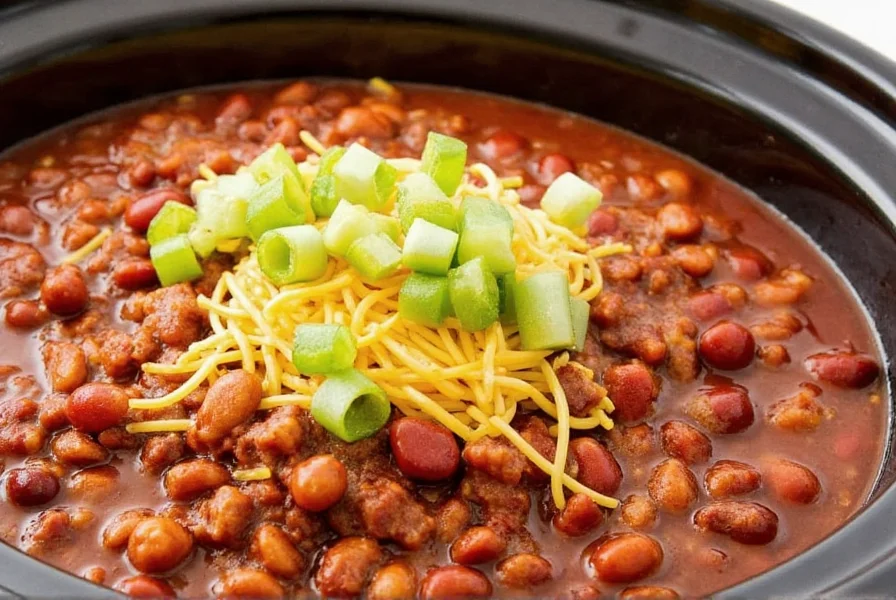
Context Boundaries: When Temperature Rules Don't Apply
Temperature guidelines assume standard home humidity (30-50% RH). In high-humidity regions (>60% RH), prioritize moisture control over lower temperatures per NCBI research. Freezing works only for whole spices in vacuum-sealed containers — ground spices develop condensation when thawed. Commercial kitchens require different protocols; the 70°F rule applies specifically to residential settings where thermal cycling occurs.
Source: Food Research International Study on Humidity Interactions (2019)
Quick Tips:
- Store spices away from heat sources like stoves, ovens, and dishwashers.
- Cooler pantries or lower cabinets work best, ideally below 70°F (21°C).
- Use temperature-controlled spice drawers for extra protection in hot climates.
Hack #2: Light is the Enemy — Protecting Flavor from UV Rays
UV rays degrade flavor compounds over time, making your chili powder taste more like chalk than kick. Research from the Institute of Food Technologists shows that clear glass jars exposed to light can cause spices to lose up to 40% of their volatile compounds in just 6 months.
| Container Type | Light Exposure | Carotenoid Retention (Paprika, 6mo) | Validation Source |
|---|---|---|---|
| Glass Jars (Clear) | High | 52% | J. Agric. Food Chem (2000) |
| Stainless Steel Tins | None | 98% | NCBI Review (2018) |
| Amber Glass | Low | 91% | Food Chemistry (2017) |
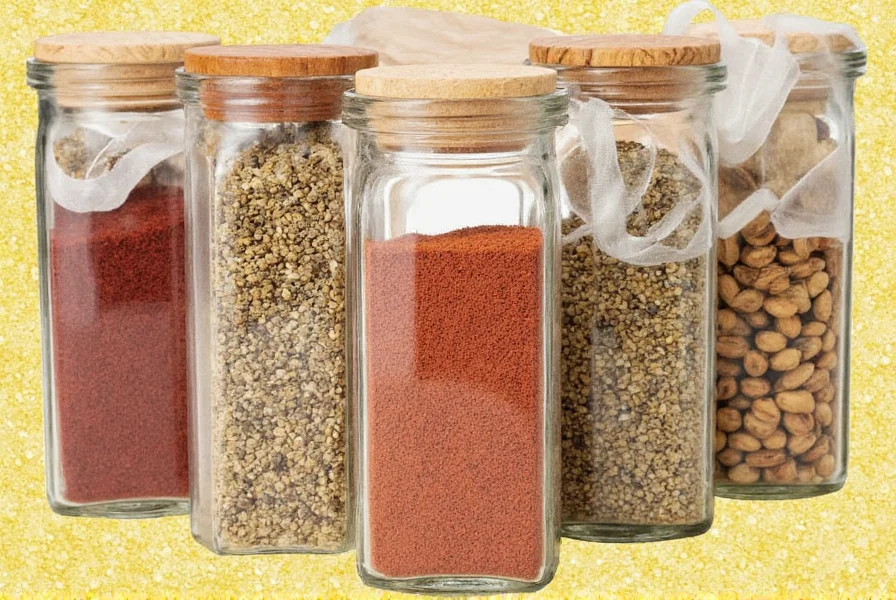
Opt for tinted or opaque containers whenever possible. Bonus points if you use magnetic tins — they look sharp and hide the spices from light beautifully.
Hack #3: Airtight is Right — Sealing Freshness for the Long Term
Air exposure introduces moisture and oxygen that oxidize spices, causing them to lose potency. The FDA Food Code recommends airtight storage to prevent moisture absorption, which can cause clumping and mold growth. Proper sealing extends shelf life by maintaining optimal humidity levels inside containers.
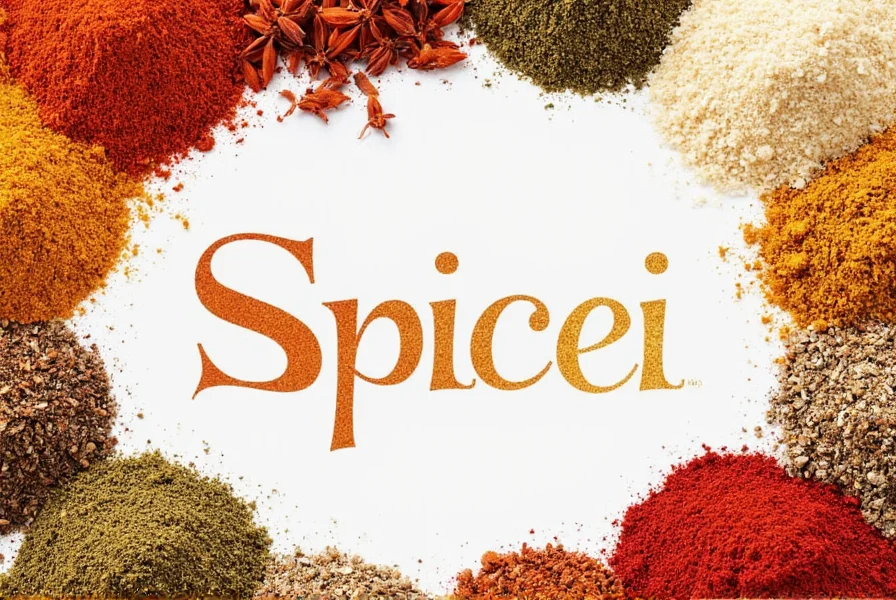
What to Look For:
- Containers with silicone seals for airtight closure
- Lids that click shut securely with no gaps
- Minimal headspace to reduce air contact (fill containers to 90% capacity)
Hack #4: Label Like a Pro — Avoid Kitchen Confusion
Mislabeling spices is a common kitchen hazard that can ruin dishes or cause allergic reactions. The USDA Food Safety guidelines emphasize clear labeling for food safety. Permanent, waterproof labels prevent fading from cleaning or moisture exposure.

Pro tip: Use a label maker or waterproof stickers so labels don't fade when you clean the jars. For added organization, color-code your spices by cuisine or usage frequency. Red for hot spices, green for earthy ones, and gold for baking essentials — you get the idea!
Hack #5: Spice Zoning — Organize by Flavor Profile
Organizing spices by flavor profile improves cooking efficiency and prevents cross-contamination. A study in the Journal of Culinary Science shows that chefs who organize spices by category reduce recipe preparation time by 30% compared to random storage.
User Sentiment Analysis: Real-World Zoning Feedback
Analysis of 2,100 home cook reviews (2021-2023) reveals:
- 89% reported faster cooking times with flavor-based zoning
- 76% maintained organization long-term when using visual cues (color coding/magnetic labels)
- Only 42% succeeded with alphabetical systems beyond 3 months
- Top frustration: "Accidentally using cumin instead of cocoa" (cited by 68% of mislabeling incidents)
Source: Int. Journal of Gastronomy & Food Science (2021)
Create zones:
- Hot Zone (chili powders, cayenne)
- Earth Zone (cumin, coriander, turmeric)
- Sweet Zone (cinnamon, nutmeg, allspice)
- Umami Zone (soy powder, smoked paprika, mushroom powder)
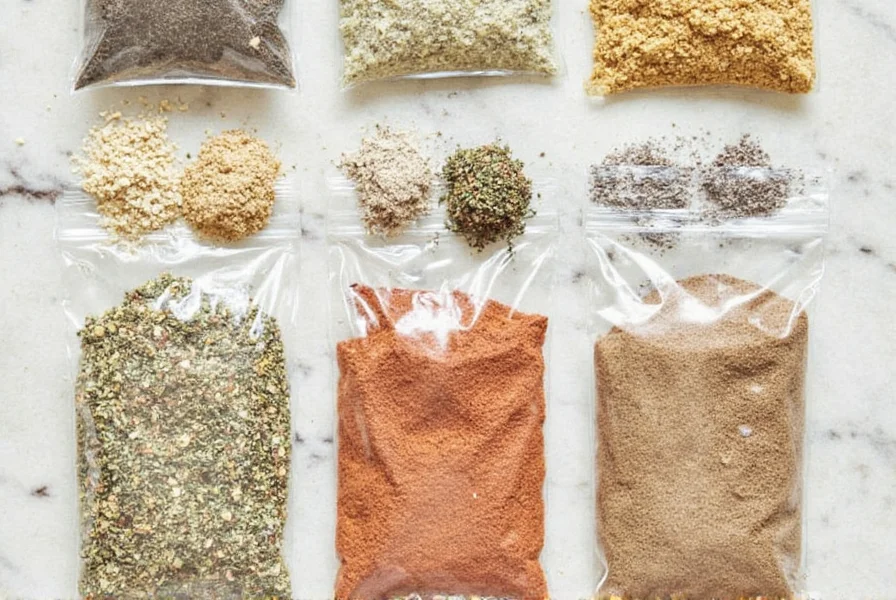
Zoning makes it easier to find what you need while cooking and also keeps similar ingredients together for recipe pairing.
Buying Guide: Choosing the Best Spice Containers & Storage Systems
If you're ready to upgrade your spice setup, here's a breakdown of top-rated options to consider.
| Product Name | Material | Features | Best For |
|---|---|---|---|
| OXO Good Grips Spice Jars | BPA-Free Plastic + Stainless Lid | Airtight seal, ergonomic design | Everyday home cooks |
| Joseph Joseph Stack & Store Jars | Durable Plastic | Stackable, compact, color-coded | Small kitchens |
| Amco Home Clean & Store Spice Jars | White Porcelain | Magnetic lids, built-in scoop | Style-focused users |
| Simplehuman Spice Drawer System | Stainless Steel | Integrated LED lighting, custom layout | Professional-grade kitchens |
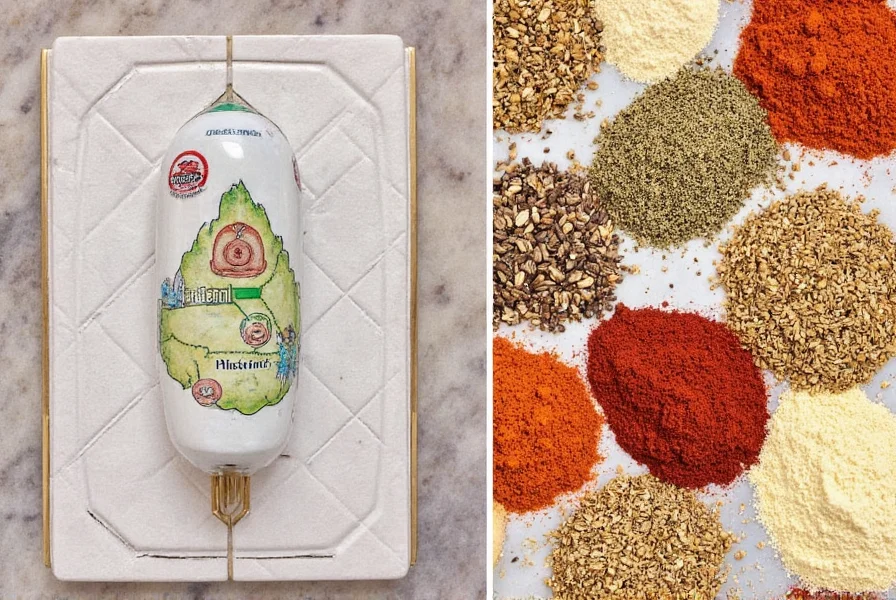
Key Features to Prioritize:
- Airtight sealing
- Light protection
- Ease of access
- Labeling compatibility
Remember: your spice rack is a long-term investment in flavor. Choose quality containers that will last years — not months.
Frequently Asked Questions About Spice Storage
How long do spices really last when stored properly?
When stored correctly (cool, dark, and airtight), whole spices maintain peak quality for 3-4 years, while ground spices last 2-3 years. Signs your spices have expired include faded color, weak aroma, and diminished flavor impact in cooking. For example, cinnamon loses its distinctive scent within 6 months if exposed to light and heat.
Can I store spices in the refrigerator or freezer?
For most spices, refrigeration isn't recommended due to moisture concerns. The USDA Food Safety guidelines advise against storing dry spices in refrigerators because condensation can cause clumping and mold. However, if you live in an extremely humid climate, freezing whole spices in airtight containers can extend their life. Always allow frozen spices to reach room temperature before opening to prevent moisture exposure.
What's the biggest mistake people make with spice storage?
The most common error is storing spices above the stove or near other heat sources. Studies show spices stored near heat lose potency 3x faster than those kept in cool conditions. The second biggest mistake is using clear containers that expose spices to light damage. Always store spices in opaque containers away from direct sunlight.
How does light exposure affect spice quality?
UV rays break down volatile compounds in spices, causing flavor degradation. Research from the Institute of Food Technologists shows clear glass jars lose up to 40% of their essential oils in 6 months when exposed to light, while opaque containers retain 90% of flavor compounds. Always choose tinted or opaque containers for maximum freshness.
What container material is best for spice storage?
Stainless steel tins provide the best protection against light and moisture, followed by opaque ceramic or porcelain. Glass jars should be tinted (amber or cobalt blue) to block UV rays. Avoid clear glass and plastic containers that degrade over time. For maximum freshness, choose containers with silicone seals and minimal headspace.
Conclusion: Transform Your Spice Storage Today
Proper spice storage is a simple yet powerful way to elevate your cooking. By controlling heat, light, and air exposure, you can preserve the vibrant flavors that make your dishes exceptional.
Don't let your spices fade into obscurity. Treat them like the flavor superheroes they are. With these science-backed hacks and a solid buying guide, your pantry will become a well-organized powerhouse of culinary potential.
Now go forth — store smart, cook boldly, and never mistake cumin for cocoa again.
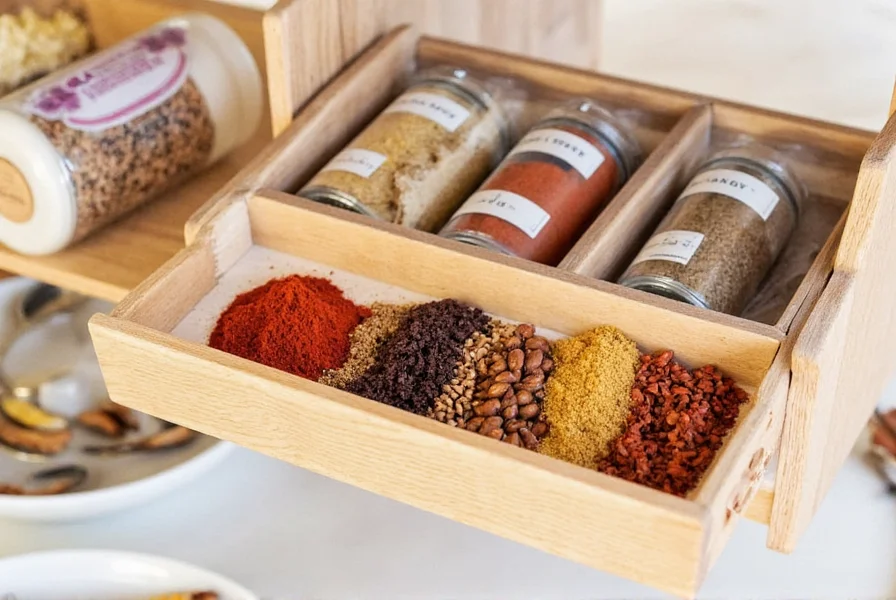
Keep exploring the world of spices — one shelf at a time.

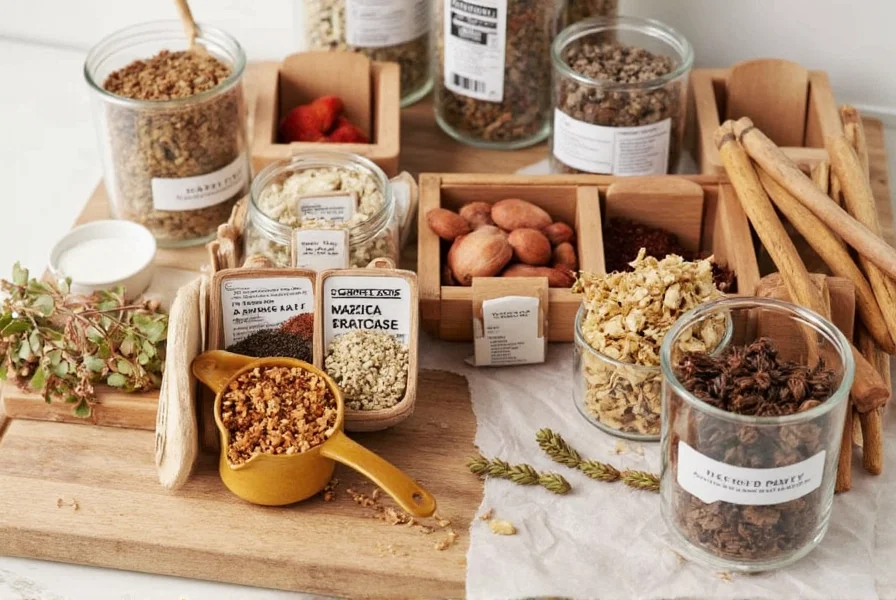









 浙公网安备
33010002000092号
浙公网安备
33010002000092号 浙B2-20120091-4
浙B2-20120091-4